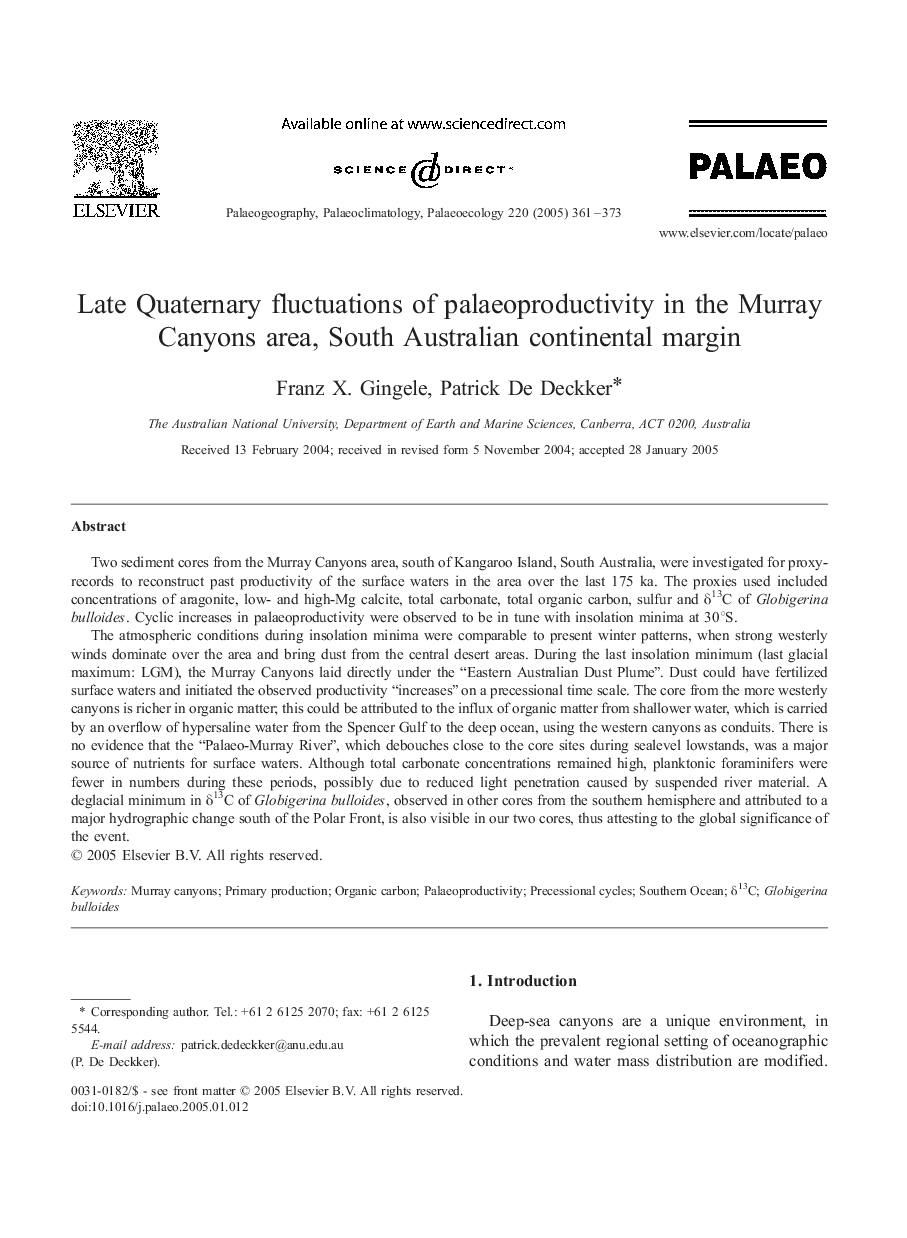| Article ID | Journal | Published Year | Pages | File Type |
|---|---|---|---|---|
| 9463182 | Palaeogeography, Palaeoclimatology, Palaeoecology | 2005 | 13 Pages |
Abstract
The atmospheric conditions during insolation minima were comparable to present winter patterns, when strong westerly winds dominate over the area and bring dust from the central desert areas. During the last insolation minimum (last glacial maximum: LGM), the Murray Canyons laid directly under the “Eastern Australian Dust Plume”. Dust could have fertilized surface waters and initiated the observed productivity “increases” on a precessional time scale. The core from the more westerly canyons is richer in organic matter; this could be attributed to the influx of organic matter from shallower water, which is carried by an overflow of hypersaline water from the Spencer Gulf to the deep ocean, using the western canyons as conduits. There is no evidence that the “Palaeo-Murray River”, which debouches close to the core sites during sealevel lowstands, was a major source of nutrients for surface waters. Although total carbonate concentrations remained high, planktonic foraminifers were fewer in numbers during these periods, possibly due to reduced light penetration caused by suspended river material. A deglacial minimum in δ13C of Globigerina bulloides, observed in other cores from the southern hemisphere and attributed to a major hydrographic change south of the Polar Front, is also visible in our two cores, thus attesting to the global significance of the event.
Related Topics
Physical Sciences and Engineering
Earth and Planetary Sciences
Earth-Surface Processes
Authors
Franz X. Gingele, Patrick De Deckker,
